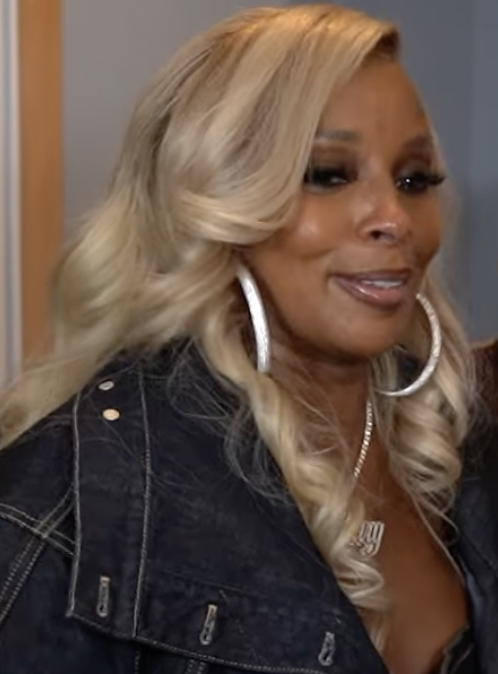best Mary J. Blige songs (A-Z) ↓↓↓

Scroll down and discover the best Mary J. Blige songs (A-Z)!
We've meticulously organized our extensive library for your convenience. Explore best Mary J. Blige songs sorted by popularity to easily find the tracks that resonate most with listeners, or browse through our alphabetical (A-Z) listing to discover hidden gems and classic favorites alike. Whether you’re a long-time fan or new to Mary J. Blige music, there’s something for everyone to enjoy.
♫Mary J. Blige
Best Mary J. Blige songs
A-Z songs of Mary J. Blige (82)
Mary J. Blige info & bio
 Mary Jane Blige ( BLYZHE; born January 11, 1971) is an American singer, songwriter, rapper, actress, and entrepreneur. Often referred to as the "Queen of Hip-Hop Soul" and "Queen of R&B", her accolades include nine Grammy Awards, a Primetime Emmy Award, four American Music Awards, twelve NAACP Image Awards, and twelve Billboard Music Awards, including the Billboard Icon Award.
Mary Jane Blige ( BLYZHE; born January 11, 1971) is an American singer, songwriter, rapper, actress, and entrepreneur. Often referred to as the "Queen of Hip-Hop Soul" and "Queen of R&B", her accolades include nine Grammy Awards, a Primetime Emmy Award, four American Music Awards, twelve NAACP Image Awards, and twelve Billboard Music Awards, including the Billboard Icon Award.
Her career began in 1988 when she was signed to Uptown Records by its founder Andre Harrell. In 1992, Blige released her debut album, What's the 411?, which is credited for introducing the mix of R&B and hip hop into mainstream pop culture. Its 1993 remix album became the first album by a singer to have a rapper on every song, popularizing rap as a featuring act. Both What's the 411? and her 1994 album My Life ranked among Rolling Stone's 500 Greatest Albums of All Time list. Throughout her career, Blige went on to release 15 studio albums, four of which topped the Billboard 200 chart. Her biggest hits include "Real Love", "You Remind Me", "I'm Goin' Down", "Not Gon' Cry", "Everything", "No More Drama", "Be Without You", "One" (with U2), "Just Fine" and the Billboard Hot 100 number-one single "Family Affair".
Blige enhanced her popularity with an acting career. She was nominated for two Academy Awards, for her supporting role as Florence Jackson in Mudbound (2017) and the film's song "Mighty River", becoming the first person nominated for acting and songwriting in the same year. Her other film roles include Prison Song (2001), Rock of Ages (2012), Betty and Coretta (2013), Black Nativity (2013), Trolls World Tour (2020), Body Cam (2020), The Violent Heart (2021), Respect (2021) and Rob Peace (2024). Her television work include the series The Umbrella Academy (2019) and Power Book II: Ghost (2020–2024).
Blige received a Legends Award at the World Music Awards in 2006, the Voice of Music Award from ASCAP in 2007 and a star on the Hollywood Walk of Fame in 2018. In 2010, Billboard ranked her as the most successful female R&B/Hip-Hop artist of the past 25 years. In 2017, the magazine named "Be Without You" as the most successful R&B/hip-hop song of all time, as it spent a then-record 15 weeks atop the Hot R&B/Hip-Hop Songs chart and over 75 weeks on the chart overall. Blige was featured in listicles such as VH1's 100 Greatest Artists of All Time (2011), Time's 100 most influential people in the world (2022) and Rolling Stone's 200 Greatest Singers of All Time (2023). In 2024, she was inducted into the Rock and Roll Hall of Fame.
Mary J. Blige videos are courtesy of YouTube